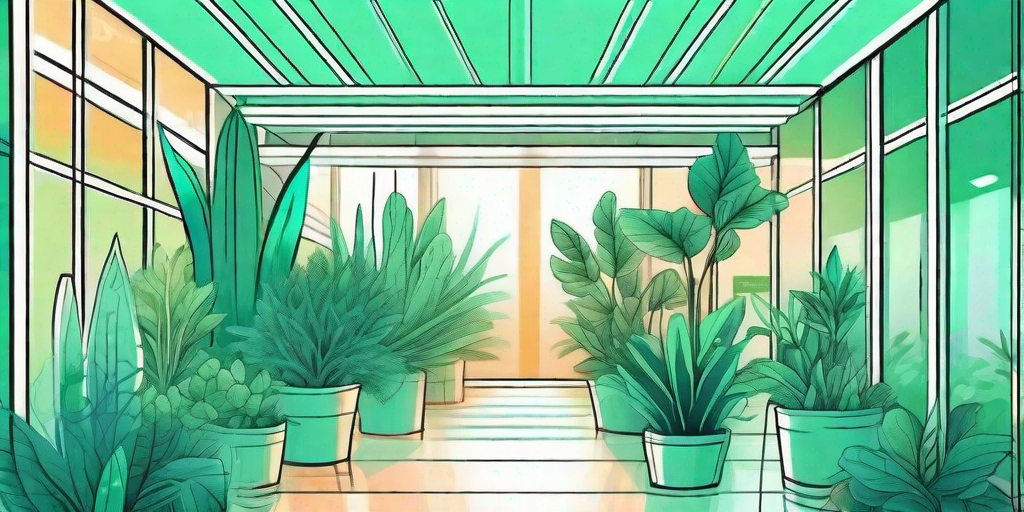
In the world of horticulture, lighting is no laughing matter. It's the lifeblood of your plants, the sun to their solar system, the disco ball to their dance floor. And when it comes to lighting, fluorescent is the belle of the ball. But why, you ask? Well, sit back, grab a cup of tea, and let's delve into the dazzling world of fluorescent lighting for plants.
The Science Behind Fluorescent Lighting
Before we dive into the benefits, let's get our lab coats on and explore the science behind fluorescent lighting. Don't worry, we won't go too deep into the rabbit hole. We know you're here for the juicy plant stuff, not a physics lecture.
Fluorescent lights work by using electricity to excite mercury vapour within the bulb. This produces ultraviolet light that then causes a phosphor coating on the inside of the bulb to glow. The result? A bright, efficient light that your plants will love more than a bee loves nectar.
Why Plants Love Fluorescent Light
Plants are a bit like teenagers; they love to soak up the light. But unlike teenagers, they use this light for photosynthesis, the process of converting light, carbon dioxide and water into food. And fluorescent lights provide the perfect spectrum of light for this process.
Fluorescent lights emit a large amount of blue and red light, the two colours that plants absorb the most. Blue light encourages leafy growth, while red light promotes flowering. It's like a buffet of light, and your plants are ready to feast.
Benefits of Fluorescent Lighting for Your Plants
Now that we've covered the science, let's get to the good stuff: the benefits. And trust us, there are more benefits to fluorescent lighting than there are leaves on a tree.
Firstly, fluorescent lights are energy efficient. They use less electricity than other types of lighting, which means you can keep your plants happy without breaking the bank. Plus, they're environmentally friendly, so you can sleep easy knowing you're doing your bit for Mother Nature.
Long Lifespan
Fluorescent lights have a longer lifespan than other types of lighting. They can last up to 10 times longer than incandescent bulbs, meaning less time spent changing bulbs and more time admiring your lush, leafy friends.
And let's not forget the consistency of light output. Unlike other lights that can flicker or dim over time, fluorescent lights maintain a consistent light output throughout their lifespan. Your plants will get a steady supply of light, just like they would in nature.
Low Heat Output
Another benefit of fluorescent lights is their low heat output. Other types of lighting can produce a lot of heat, which can be harmful to your plants. But not fluorescent lights. They stay cool, keeping your plants comfortable and reducing the risk of heat damage.
Plus, the low heat output means you can place the lights closer to your plants, ensuring they get all the light they need without the risk of getting burnt. It's like giving your plants a sunbathing experience without the risk of sunburn.
How to Choose the Right Fluorescent Lights for Your Plants
Choosing the right fluorescent lights for your plants can feel like navigating a jungle. But don't worry, we're here to guide you through it.
Firstly, you'll want to consider the size of your growing area. The larger the area, the more light you'll need. For small indoor gardens, a couple of standard fluorescent tubes should do the trick. For larger areas, you might want to consider compact fluorescent lights (CFLs) or high-output (HO) fluorescent lights.
Consider the Light Spectrum
Remember how we mentioned that plants love blue and red light? Well, different fluorescent lights emit different amounts of these colours. For vegetative growth, you'll want a light with a high output of blue light. For flowering, a light with a high output of red light is ideal.
Many fluorescent lights are labelled with a colour temperature, measured in Kelvins (K). Lights with a high Kelvin rating (5000K-6500K) emit more blue light, while lights with a low Kelvin rating (2700K-3000K) emit more red light. Choose the right one for your plants' stage of growth.
Consider the Wattage
Wattage is another important factor to consider. The higher the wattage, the more light the bulb will produce. However, higher wattage also means higher energy consumption. Balance is key here. You want enough light for your plants, but not so much that your electricity bill goes through the roof.
A good rule of thumb is to aim for 20-40 watts per square foot of growing area. This should provide enough light for most types of plants.
Frequently Asked Questions
Can I use regular fluorescent lights for my plants?
Yes, you can! Regular fluorescent lights are a great option for indoor gardening. They provide a good spectrum of light for plants and are energy efficient.
How close should fluorescent lights be to my plants?
Fluorescent lights should be placed as close to your plants as possible without causing heat damage. This is usually around 2-4 inches away. Remember, fluorescent lights have a low heat output, so the risk of heat damage is low.
How long should I leave my fluorescent lights on?
Most indoor plants benefit from 14-16 hours of light per day. However, they also need a period of darkness to rest and carry out other biological processes. A good rule of thumb is to leave your lights on for 14-16 hours, then turn them off for 8-10 hours.
Conclusion
So there you have it, the lowdown on fluorescent lighting for plants. From the science behind it to the benefits and how to choose the right lights, we've covered it all. Now all that's left is for you to go out, grab some fluorescent lights, and watch your plants thrive. Happy gardening!















